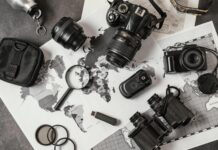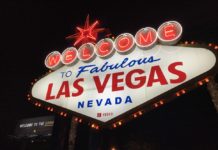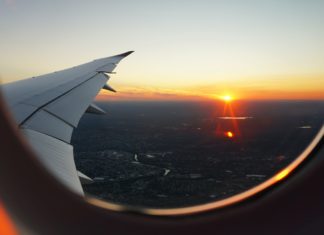My goal of this blog is to share my experience of learning Street Photography myself. Along this road, I wrote many long-form articles on certain Street Photography tips. Longer articles where I wrote about the importance of leading lines, or how you can conquer the night with your camera.
With the following list of Street Photography Tips, I wanted to give you an overview of topics that can help you to become a better Street Photographer.
How To Use these Street Photography Tips
50 Street Photography Tips are a lot to digest at one time. This list isn’t supposed to be read in one going or that you try to apply as many tips as possible when you are on the street the next time.
We as humans are bad at focusing on multiple things at the same time. My tip would be to focus on one or two tips the next time you go out on the street and improve step-by-step rather than mixing everything up.
1Get Closer
To start off the list of Street Photography Tips here is one of the most famous tips to get better results.
Robert Capa said “If your pictures aren’t good enough, you aren’t close enough”
This is true in many ways and often beginners are too afraid to get close to the subject and rather shoot from a “safe” distance. Approaching Street Photography this way has many disadvantages. You are disconnected from your subject, the subject is barely visible & the surroundings are too distracting.
If you are interested in a person, get closer until the subject fills the frame.
Overcome your fear of photographing in public.
Read More: The Fear of Photographing in public
2Shoot from a low Angle
When doing Street Photography we can either be lazy and always shoot from our normal point of view when we are standing, or we could put some extra effort into the photograph by searching for unique perspectives.
This Street Photography tip means to put more work in your Street Photography.
Shooting from a low angle has the advantage that we normally don’t see the world from this low, which makes any image automatically more interesting.
Use the LCD screen rather than your viewfinder and you can even lay your camera right on the floor. Pre-focus to make sure that your images will be sharp.
3Layer Your Images

If you are interested in landscape photography you probably noticed that most sunset photos by the ocean also feature a rock or boat in the foreground. This is not because the photographer is a rock fan, but because it improves the composition and helps the viewer to scale the dimension.
Your pictures should be interesting on every layer from foreground to background. When going out for a photo walk the next time, search for a subject, but also keep your attention to place something in the foreground and background.
By doing so, your photographs will be more life-like and three-dimensional, helping the viewer to immerse in the scene.
Read More: Layer Your Photographs
4Zone-Focus
Street Photography is a fast sport. From spotting a scene to capturing the photo, sometimes only a fraction of a second passes. The auto-focus of your camera might take longer to focus on what your point of interest is.
Therefore using the technique of zone-focussing can help you to not worry about missing the focus anymore.
In short, you use an aperture of at least f/8 and set your focus to manual. Then you set the focus distance to around 1.5 to 2 meter and most of what is near you will be in focus.
For a more comprehensive guide and the math behind it
Read More: Pre-Focus Technique
5Know Your Camera
Street Photography can be already very frustrating, but when you miss a shot because the camera doesn’t work in your favor it can really mess up my day.
Therefore get familiar with your camera beforehand. Learn the most important settings and functions at home, where you are not in a stressful situation and have all the time you need.
Don’t experiment with the settings too much, find what works for you the best and go with it. Stay with that gear for a long time and don’t change your equipment every week, otherwise, you won’t even have the chance to use the potential of your current camera.
6Use the Automatic P-Mode
Photographers are often worried that in order to get great shots you need to use the manual mode. “P-Mode is only for Amateurs” and other nonsense is easily thrown around.
Truth is, modern cameras are very advanced and in 90% of the situation they do a very well job of metering and adjusting your settings correctly. For the edge cases, you can still switch to manual anyway.
For the best experience, set boundary limits to your shutter speed and aperture, so the settings always stay in a certain range and are more predictable for you.
7Try an Off-Camera Flash
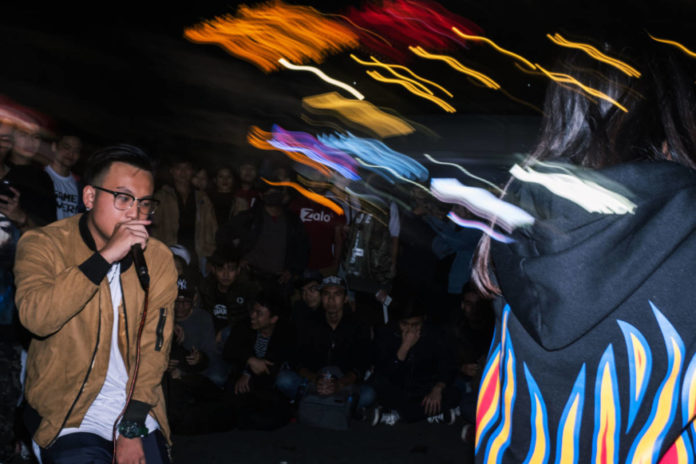
This Street Photograph Tip will get you out of your comfort zone.
When I first saw a Street Photography video with Bruce Gilden using an off-camera flash I thought that he was crazy – well maybe he is – but the images he got out of that technique looked great.
I was sure that if I tried the same thing in my hometown that I would be met with very hostile reactions.
After overcoming my initial fear and trying the off-camera flash technique myself, I can only say that it is way easier than I would have thought. People usually don’t care about the flash at all and at night, photographers have to use a flash anyway.
You can experiment at night and slower shutter speeds, or help yourself during the day when it is cloudy outside. The flash can literally bring highlights to your photographs.
Read More: Off-Camera Flash Street Photography
8Be Comfortable around Strangers
Street Photography has to do a lot with confidence and overcoming your own social boundaries. Being withheld by your own social restrictions doesn’t allow your creative freedom to reach your photography completely.
You have to be bold, to get every picture and not be afraid of strangers that you photograph.
Take the camera everywhere you go, wear it as a necklace and don’t worry too much about the opinion of some strangers on the street.
Read More: Get Comfortable
9Look for the Background
When we spot a scene for the first time it is mostly because the subject is so interesting that it caught our attention. The subject is important, but what is even more important is that it is displayed in the best possible way.
If the background is too chaotic or cluttered, which can happen often in a city environment, the subject won’t stand out and disappear in this chaos.
Before you press the shutter button, always make sure that the background is appealing.
You can, for example, shoot from a lower angle, high up or use a smaller aperture to at least blur the background a bit.
Read More: Cleaning The Background
10Post-Process as little as possible
In other genres, the post-production or retouching is a normal part of the photography workflow and sometimes takes even longer than the photoshoot itself.
Candid Photography should be about real scenes and show the unaltered reality.
When it comes to Post-Processing, keep it stupid simple. Crop the image, increase the contrast or clarity if you like to, but don’t change the picture too much.
The process should be quick and you should keep your attention on the creation of photos.
Post-Processing is only to emphasize the character, not creating it.
Read More: Post-Processing Filters
11Take the Camera Everywhere

Having your camera in public and taking pictures can be quite stressful if you are not used to it. You might believe that your camera gets a lot of attention and get a little paranoid with your thoughts. Thus limiting your own creativity and inducing fear.
By taking the camera everywhere you go, you will be more comfortable carrying that camera with you and overcome your fear to photograph on the street more easily.
Additionally, you are always ready to snap a nice Street Photo. Never miss a shot again because you preferred to leave your camera at home.
12Shoot with Your Smartphone
The better the camera, the better the images will be. That is a very poor believe when it comes to Street Photography.
Image quality isn’t that important. Story & emotions should thrive in your photographs.
You might be tempted to buy a bigger camera that has more megapixel because you are dissatisfied with your current style.
Rather than investing a lot of money in a new camera, mix it up and go out on the street to snap pictures with your smartphone.
This will force you to take a different approach, which can be refreshing and inspirational, as well as show you that it doesn’t need to be the newest camera model to take good photographs.
13Shoot in the Rain
Whenever there is only a slight chance of rain, I hear a lot of photographers complains and that they refrain from going out to shoot under these circumstances.
They miss out on great opportunities. Rain transforms the city into a whole new world, where the light will be reflected from every direction and you have a lot more toys to play with.
Puddles or Raindrops on windows, for example, are a great chance for Street Images.
Don’t worry about your gear too much, modern cameras can withstand a lot more than you might think. If you want to be on the safe side, consider using an umbrella to cover yourself and the camera. Use the P Auto-mode and you are able to control the camera one-handed.
Have a look at this Rain Series by Martin Waltz
14Shoot Everyday
Street Photography is like sports. The longer you pause, the harder it gets to continue at a high level.
Getting in the zone and keeping your concentration up all the time, requires practice continuously. Of course you won’t find inspiration every day, but going out and looking for opportunities still improves your eye to find promising situations.
If you take breaks for weeks or even months, just like with exercise there is some memory-effect. But it will take some time to reach your best level again.
Also, it will teach you that even the most mundane activities can be used for Street Photography. Do you commute daily to work? Then use this “off-time” for some shots.
Read More: The Zen Status
15Search for Companions
I prefer to hunt on the street alone. The freedom to go anywhere I want and spend as much time as I need at one location leads to my best work.
Nonetheless, finding like-minded Street Photographers can bring you to the next level. They may have different approaches to Street Photography, a diverse style or unique opinions. When I meet with other photographers it isn’t so much the shooting itself, but rather the discussions that I find interesting.
Search on Instagram or Facebook when you aren’t able to find other Street Photographers in your vicinity. Maybe you are able to establish a group of people that are in the same situation as you?
16Receive Critique
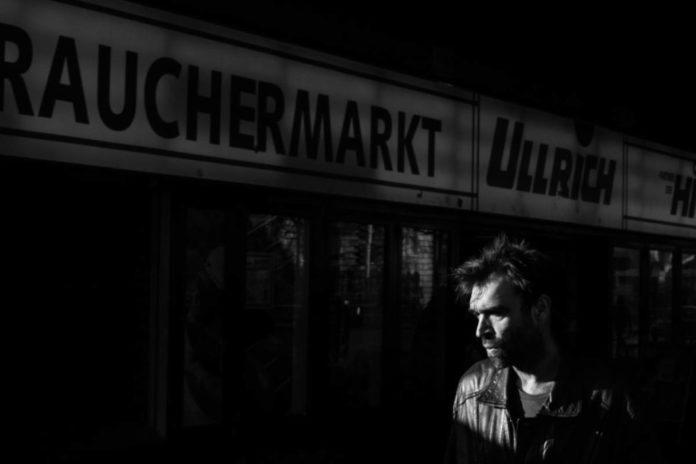
For a lot of photographers, the ego comes first. Any unwanted critique that they receive they dismiss as a “hate” comment. They also ignore Street Photography Tips because they know it better anyway.
If you truly want to improve your Street Photography, critique is important to gain an outward opinion. You are never able to judge your own pictures with an objective base of mind. Therefore other opinions are important to realize where your pictures are lacking and need improvement.
On the other hand, you shouldn’t blindly follow the opinions of other photographers. Filter what is interesting for you and then take their advice to develop your own style.
Read More: Overcome your Ego
17Give Critique
More important than receiving critique is giving critique to other photographers.
While giving a meaningful and thorough critique you need to really think about the reasons why you like or dislike an image.
Is the composition off? Are there interesting details? What about the story?
You learn a lot by analyzing images and form your honest opinion.
As a personal Tip: write down your critique on your own images. Then take a look some weeks later and see if you still agree with your own critique.
18Share Your Images
In the beginning, your images will probably suck and not gain much attention. Nonetheless, it can be motivating to share your images with others and interact with them.
Instagram, Facebook or Flickr are great platforms to share your images with a broader audience.
Outside of these “Snapshot” platforms, built a blog where you work on a project and built up a portfolio. Street Photography Tips can help you to increase your reach and built and audience.
Read More: Share your Images
19Don’t trust Social Media
Social Media is great to get to know other Street Photographers, find inspiration and chat with them.
Outside of this, Social Media is a new competition with its own rules. Don’t be desperate because your pictures don’t get so many likes compared to a fellow photographer.
It is mostly about being active and engaging with other photographers and they will engage back and leave a like in return.
Social Media is not about photographic quality, it is about exposure and presenting your work.
If you want to be serious about Street Photography, count on the opinion of photographers whose opinion is important to you, not some anonymous internet personas.
Read More: The Social Media Fallacy
20Learn Composition
Some of my Street Photograph Tips are bound to hard work. Hard work that pays off. Photography theory is not the most exciting aspect of Street Photography for most. But it is essential to understand how a good picture is structured.
Aesthetics are not invented by some fancy photographers but are part of our natural human DNA. The rule of thirds is a natural ratio that is pleasing to the viewer.
Imagine you want to learn an instrument and have no idea how to tune the guitar or piano. Your ideas and visions might be good, but if your instrument is out of tune you won’t be able to play beautiful songs.
Read More: Understanding Aesthetics
21Follow the Rules
There is a lot of freedom in Street Photography. We can essentially do whatever we want an no one can forbid us to create the images in the way we want.
Yet we should follow basic compositional rules. They are not an artificial intervention but natural given.
Play by the rules and create beautiful pictures this way.
Keep an eye on the background, don’t clutter the image & make sure to get close to your subject.
22Break a single Rule
Following the rules helps you to create good images.
Once you have understood and know how to apply those rules you can experiment by breaking single rules. For example, if you try to create a perfectly symmetrical shot, you can break the symmetry with a single detail.
Images that follow every rule are pleasing, but also have the risk of being “too perfect” and almost boring.
Breaking one rule means to create some tension, yet retaining the beautiful foundation for the pleasing aesthetics.
23Be Emotional
Life is about emotions.
We are looking at good photographs longer because they touch us deeply and evoke emotions. They make us cry or laugh, or anything in between, but they evoke something.
Pictures that aren’t emotional are quickly forgotten.
In order to create emotional images, be emotional yourself. When you are out on the street, be open to those emotions to sense them.
Read More: Evoke Emotions
24Reach the “Zen-Status”
Going out on the street can be like meditation. In fact, I get the best result when I am in some kind of flow. We also call this the “Zen-Status” where your concentration is at the maximum level and you seem to absorb everything that is around you.
Achieve this status by keeping your attention on the street. Don’t lose focus by using your smartphone, or looking at the camera settings too much.
Simply focus on the present and the moment.
It might take some hour or two to get the feeling for it, but after that warming up period, the images and good results should follow.
Read More: Reaching Zen
25Inspire yourself outside of Street Photography
Dedication and will to get better are honorable, but spending 100% of your time on Street Photography is not only exhausting, but also inefficient.
There is so much we can learn from paintings, movies or music that we shouldn’t miss out on.
Additionally, you might refuel your own inspiration through a great poem that you just read which will make its way into a photograph of yours.
Be open-minded and seek inspiration everywhere in life, not only Street Photography.
Read More: Inspire Yourself
26Learn Street Photography Tips from the Masters
You don’t have to invent the wheel again when others have already discovered it.
Photography is more than a century old and there is a lot that we can learn from the early masters. Don’t be afraid to try out their styles and copy it directly.
Especially when you are into Black & White Photography the style of for example Ansel Adams is legendary.
Or you are more into projects and want to learn how to create a documentary project?
Then Gordon Parks or Sebastiao Salgado might the photographers you are looking for.
27Shoot a Project

One thing I don’t really like about Street Photography is that the images are very disconnected from each other. It is hard to tell a complex story when you only have a single frame.
Outside of Photography, you might have other interests that can be turned into great projects.
Are you a sports fan? Then follow your local team and document their way to victory.
Or are you more into music? Portrait a band backstage before their gig.
Either way, Photography projects are a great way to combine more hobbies of yours into a single body of work.
28Write about Photography
I started this blog because I wanted to share what I learned during the past week or simply to share some thoughts on Street Photography.
While writing the articles, I noticed that they are not only a document, but also a vital part of the learning process itself. Writing about Street Photography forces me to think more thorough about the subjects that I discuss.
- What are important aspects of a topic?
- Advantages / Disadvantages?
- Tips & How To?
Also, it can be pretty interesting how opinions in the future can change. I am sure that some of the articles that I wrote a year ago would be very different if I would write about the topic again.
Therefore I recommend you to start a blog on your own. Just for yourself.
Read More: How To start a Photography Blog
29Search for Triangles
The composition is not only about obvious things like the golden ratio but also about subtle geometrical figures. Circles, Triangles or diagonals make interesting details in the arrangement of your image.
Triangles lead the viewer’s eye and make a picture more dynamic.
Search for them when you are on the street next time, they can be found everywhere, from abstract forms to street signs or other triangles that you can find on the street.
30Combine Colors
Black & White is very popular in Street Photography. Nonetheless, it can be very refreshing and train your eye if you go out with the purpose of searching for specific colors.
Details make a photograph and colors are very vibrant and standing out when they don’t fit in a picture.
Fill the frame with the same colors and get a feeling for which colors work.
31Street Photography Without People
Street Photography is about life and humans. Of course, the easiest way to portray the lifestyle of a certain time is by showing people directly.
Then there is also another side of Street Photography where you can show the zeitgeist without having people in your pictures.
Humans leave traces wherever they live. To document the time you can also focus on other details. Maybe cars are representative of a certain area. In Hanoi, for example, the motorbikes are part of one’s identity.
Search for these traces and look for interesting compositions without people.
Read More: Street Photography Without People
32Buy Books
Of course, you can find a lot of pictures online and create a collection of pictures that inspire you there.
Nonetheless, Books remain my favorite source of inspiration. Having a book in your hand and viewing the photographs is a very different feeling than looking at a screen. You are able to touch the photo and in a way be closer to the subject.
Books also last an eternity, while social media is just a short or other online sources are more short-lived.
Read More: Best Photography Books
33Break The Routine
One of the Street Photography Tips to reset your mindset.
Most of our day is dominated by the same habits. We wake up early have our usual morning routine, commute to our work and do that for most of the week.
Routine is a killer of creativity. If we always do the same things over and over again, we won’t have the creativity to discover a new world through Street Photography.
Therefore try to break your routines wherever you feel uninspired.
Search for new places to photograph, take a different camera, or try other new things apart from photography.
34Try Film Photography
Digital Photography is great and has many advantages compared to film photography. I also shoot only digital but have tried film photography a few times and there are also lessons we can learn.
First of all, film photography forces us to put more thought into every single image. In Digital we can use the burst mode as much as we want. Digital storage is almost limitless.
Film is more limiting and costly. We have to thoroughly think before we press the shutter button in order to avoid wasting film.
Another benefit is that we don’t see the images immediately. We are more focused on the moment and aren’t tempted to look at the screen of our camera.
Try shooting a few rolls of film and it will also help to improve your digital photography.
35Don’t look at your images
In the past when only film photography was available, photographers had to wait for days or sometimes weeks to see the results of their work.
With Digital Cameras we can see the images we just took immediately. This has some advantages, for example, you can see if the settings are off, or if the images are out of focus.
A disadvantage is that we might spend more time analyzing our pictures while we are on the street than searching for new images.
Or we arrive at home and upload our pictures directly to our social media feeds.
If you want to be able to judge your photographs more objectively, you should leave them alone for some time and then have a look again.
Do you still like them, or do they look different to you?
36Try a different Genre
Street & Documentary Photography are the most difficult genres in my opinion. You have to be quick and don’t have a second chance.
Yet, it can be helpful to try other genres to improve in particular disciplines.
Portrait Photography can be helpful to be more comfortable with your camera around other people.
Architecture can help to discover geometrical forms.
Break the routine and try some other genres that are fun and inspire you for better Street Photography and use this tip to expand your horizon.
37Tell a Story

Street Photographs are not a superficial surface. There should be more than simply good visuals.
Telling a story within one picture is hard. It is also not the duty of the photographer to tell the story. Rather he should give hints and details that allow the viewer to see stories in the pictures themselves. This means that viewers can have different stories, which isn’t a failure on the photographer’s side.
In general, we can break down stories into two categories. Open and closed stories.
Read More: The Art of Storytelling
38Search for Gestures
Any form of human interaction is a good start for an interesting picture. Gestures are universal and often a great opportunity to start a story.
Why is the woman pointing in this direction?
Gestures can also represent emotions and be angry or more joyful.
Employing gestures means automatically that there is some sort of tension in your picture. Get close to put more emphasis on the gesture.
39Be Patient
Every Street Photographer struggles. Whether they are masters themselves and already shoot for decades, or if they are just starting.
Street Photography can be a very rewarding task when you get the shot you were looking for, but it isn’t uncommon to go for weeks without finding anything.
Continue do work hard and don’t give up. Patience is one of the most important traits of every Street Photographer.
In addition to the long-term patience, there is also your frustration tolerance when you are actively shooting. When you have a good spot, where the background is great and the light is like you imagined, you shouldn’t give up early either.
Work the scene until you get the shot, even if this means to put in long hours.
40Be Curious
As adults, we often try to play it cool. Nothing can really amaze us anymore and we have seen everything. At least we pretend it to be this way.
Do you remember when you were a kid and everything around you seemed interesting?
Embrace this mindset again and follow your curiosity when you are out on the street shooting. Subtle details can lead to great stories.
41Become Invisible
Candid Photography is hard when we as Street Photographers are very noticeable to our subjects. Most people behave differently when they are being photographed. They smile or stop whatever they were just doing.
If you want to photograph the true character of the people, becoming invisible can be a way for you to get candid images.
There different ways to achieve this.
For example, you can behave like a tourist, carry a smaller camera or photograph only through the LCD screen.
Read More: Become Invisible
42Have Something to Say
Photography is about expressing yourself. I feel that as a photographer you have to either openly express your emotions or at least have a message to convey.
This might not come early, but over a long period, your images represent your character. You shouldn’t block these emotions but embrace them.
Put your character in your photography and be open to express yourself.
43Print Your Pictures
You already enjoy seeing our photographs on a screen. Imagine holding them in your hand. Printing some of your pictures that you like will feel like an accomplishment and motivate you to go out and get more images that you can print.
Prints look also way better in my opinion than digital images.
If you prefer Black&White you might also look out for places that still print with the Gelantin Silver Process.
44Exhibit Your Photographs
Printing your photographs is only the first step. Now imagine them in nice frames hanging on the wall.
There you can show your friends all the hard work that went into the photographs and also excite other people for our photography.
Although exhibitions don’t have the reach that your Instagram profile might have it is a totally different atmosphere to see your own pictures hang on the wall.
It doesn’t even need to be a museum or fancy place, you can ask a cafe or rent your own room.
There might also be competitions in your area where you can submit pictures of yours and with a little luck, you might see your photographs on the wall.
45Watch Everybodystreet
Build up your understanding of Street Photography by watching this classic documentary about New York Street Photographers.
This movie is not very entertaining in telling the stories of the presented photographers, but it actually shows their approach to Street Photography and how they work.
It is a beautiful document of past time and New York is always worth a view.
Let yourself inspire by this classic piece of Documentary.
Read More: Everybodystreet
46Travel
Another way to break the habit and regain inspiration is by traveling.
Now you might be concerned that traveling is time-consuming and also costs a lot of money, but to escape the daily routines you don’t need to travel far.
Also, traveling alone is a great way to discover a new city.
The next big city nearby has also a lot of potential for great Street Photography.
47Shoot at Night
Sounds a bit counterintuitive to photograph where there is no light right?
Truth is that there are more than enough small alleys with signs or artificial lights that allow for photography at night.
You need to adjust your settings for this undertaking. Open the aperture and slow down the shutter speed.
Increasing the ISO can also work positively to create gritty street photos.
Read More: Night Street Photography
48Look for Leading Lines
The photographer has the power to influence where the eyes of the viewer start to look at the picture and where they wander.
Having lines leading to a subject increases its importance.
For a story, this usually marks the starting point as the eye is automatically forced in this direction. From there, the story develops.
Read More: Leading Lines
49Keep it Simple

You have a lot of resources on my blog and this article to improve your Street Photography and get better. Nonetheless, you should Street Photography not view as a science and make it more complicated as it already is.
Focus on some key points, get out and shoot.
Look at your photographs, be honest and analyze where you can improve.
Then work on certain areas where you like to see improvements.
Learning Street Photography takes it a lot of time. Therefore don’t be too harsh to yourself and keep it rather simple.
Read More: Learning Street Photography
50Have Fun
Street Photography should always be an enjoyable activity. Don’t stress out to learn all of the Street Photography Tips. Rather keep them in mind and apply as you see the right fit.
Even if your goal is to be the best Street Photographer, or hunt down the best photos, Street Photography is more about the process than the results.
Going out, being in the zone and enjoying the moment. Street Photography is about capturing those moments.
Meet with other photographers, have constructive discussions and see the world.
With these Street Photography tips, I hope to give you new approaches and ideas on how to reach your goals.




